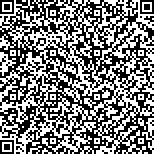Archive > Volume 46 Issue 3 > 2020,46(3):403-411. DOI:10.7519/j.issn.1000-0526.2020.03.011 Prev Next
Visibility Forecast Correction Based on RMAPS-CHEM Model Products in Beijing
- Article
- Figures
- Metrics
- Preview PDF
- Reference
- Related
- Cited by
- Materials
Abstract:
This study conducted experiments based on the hourly visibility forecast products with spatial resolution of 3 km by RMAPS-CHEM. The data in 2016 were taken as a sample, and the model forecasts and observations from each site were compared. The bias was corrected step by step, by considering diffe- rent forecasting errors in different regions, periods and levels. 〖JP2〗The data for 2017 were used for verification. The results show that statistical bias correction has a good correction effect on visibility forecast for 2017, which could not only improve the visibility overestimation in high altitude areas, but also better predict the low visibility phenomenon. Taking January 2017 as an example, the average deviation and root mean square error of Beijing Guanxiangtai Station were reduced, and the accuracy of 0-24 h grading forecasting was improved. Also, the optimized results were reasonably interpolated and applied to the Beijing Integrated Grid Analysis Prediction Systems (iGrAPS) to provide the visibility forecast product in Beijing for 0-96 h with 1 km spatial resolution, which could better support the forecast of low-visibility weather phenomena such as fog and haze.
Keywords:
Project Supported:
Clc Number:


Mobile website









